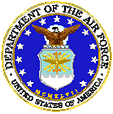

Dobbins Air Reserve Base
Executive Summary

Dobbins ARB has been actively incorporating Pollution Prevention (P2) into its everyday operations in accordance with Air Force, Air Reserve headquarters, Executive Order, and federal, state and base policies, goals and directives. P2 initiatives have resulted in a significant reduction in the use of hazardous materials and in the generation of hazardous waste on Dobbins.
Introduction
Dobbins Air Reserve Base covers 1654 acres of Air Force (AF) owned land located in Marietta, including 63 acres of wetlands. The DoD host organization is the 94th Airlift Wing (AW). Dobbins ARB is adjacent to Naval Air Station Atlanta and Lockheed Martin Aeronautical Systems (Air Force Plant No. 6), who share Dobbins' runway access. Dobbins employs over 800 civilian personnel and more than 1500 air reservists during Unit Training Assemblies (UTA) weekends. The base has several tenants, including the 22nd Air Force Headquarters, Air Reserve, Air Guard, Army Reserve, and Army Guard units. Aircraft assigned to Dobbins include C-130H, C-12 and C-35 transport aircraft, C-23 and C-26 fixed wing aircraft, and OH-58 and H-60 helicopters. Dobbins' mission is recruiting, training, and support for more than 8,000 Reservists and Guardsmen from all branches of DoD service; maintaining readiness to support active military when needed; providing volunteer support to active military on a daily basis; and supporting disaster relief and other peacetime events as needed. Dobbins is currently the AF center for training reservists in aerial port operations, runway repair and field services, and it hosts 3 major AF Reserve schools: the AF Reserve Training Proficiency Center, the Prime Readiness in Base Services school, and the Eastern Regional C-141 Flight Simulator Training school.
Specific Pollution Prevention (P2) Initiatives
Hazardous Waste Goal
Reduce generation by 50% of CY92 baseline by CY99. Dobbins has implemented: absorbent (contaminated with organics) recycling; replacement of solvent degreasing methods with aqueous parts washers (including jet washers, SmartWashers, and mini steam cleaners); engine antifreeze recycling; plastic blast media leasing; battery recycling; aerosol can recycling; oil filter recycling; fluorescent light & ballast recycling; use of vinyl lettering machines; and other similar process changes. Dobbins has reduced its hazardous waste generation enough over the last four years to drop from Large Quantity generator status to Small Quantity generator status in 1998.
Non-Hazardous Solid Waste Goal
Reduce Municipal Solid Waste by 50% of CY92 baseline by CY97, and divert 40% of non-hazardous solid waste FY97 baseline to recycling by FY99. Dobbins has expanded its recycling program which began in 1995 to include: all office paper products (including fiberboard and cardboard); all metals (including food cans, oil cans, paint cans, cabling, piping, etc.); plastics (including foodstuffs, beverages, bags, shrink wrap, transparencies); glass (from foodstuffs, beverages); wood (including pallets); batteries; fluorescent lights/ballasts; absorbents/rags; and compact and floppy disks.
EPA-17 Chemicals Goal
Reduce usage of the EPA-17 chemicals by 50% of CY92 baseline by CY96. Dobbins exceeded this goal in 1995 by implementing restrictions on quantity purchases of hazardous materials, as well as finding substitute materials.
Ozone Depleting Compounds
Reduce purchase of ozone depleting compounds (ODCs) by 100% of CY92 baseline by CY96. Dobbins was authorized to use 10 pounds of ODCs in 1998.
Pesticides Goal
Reduce usage by 50% of CY93 baseline by FY00. Finding physical means of eliminating pests and weeds in place of chemical methods.
TRI Emissions Goal
Dobbins has not reached thresholds for reporting TRI emissions since 1994, but these emissions are being reduced concurrently under the P2 initiatives within the other areas. AF goal: Reduce by 50% of CY94 baseline by CY99.
Energy Goal
Reduce energy consumption by 20% BTUs/sqft by CY00 and by 30% by CY05 (CY85 baseline).
Pollution Prevention Program
The P2 Program at Dobbins has been implemented in accordance with United States Air Force, Air Force Reserve Headquarters, federal, state and base policies, instructions and directives. Several tools have been developed to ensure that pollution prevention is incorporated into everyday activities on the base. These include: the Environmental Protection Committee (EPC), chaired by the Base Commander; several subcommittees to the EPC (P2 Working Group, Qualified Recycling Program working group, Ozone Depleting Compounds working group, and Affirmative Procurement working group among others); the Air Force Reserve Pollution Prevention Strategic Plan; and the Hazardous Materials Management Process Team a.k.a. the HAZMART Team.
HAZMART Team
POC: Ms. Leigh Banks 205.940.3528